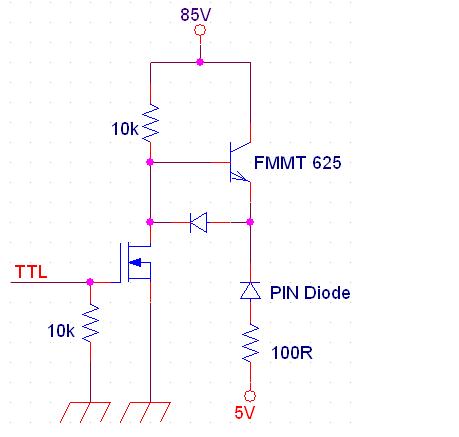themaccabee
Full Member level 4
Hi ,
I need to design a driver circuit to switch a PIN diode ON and OFF,
When switched ON the forward current should be in the range 50-100mA, im considering the following circuit..(the transistor Vbe max is only 5V)
Does it have any problems?
Thanks & regards

I need to design a driver circuit to switch a PIN diode ON and OFF,
When switched ON the forward current should be in the range 50-100mA, im considering the following circuit..(the transistor Vbe max is only 5V)
Does it have any problems?
Thanks & regards
